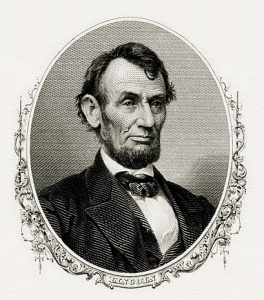Rational Policy Institute of America
“Sola Libertas”
Rational Policy Institute of America
270 Madison Avenue
New York, NY 10016
“No Reason to be Discouraged: A Market Solution for the Morose Multitude”
Abstract: Responding to the growing number of American workers in monetary and emotional distress, this paper argues for the creation of a “withdrawal market” that would free individuals to alleviate their suffering via voluntary extrication from economic society. The author coins the term “morose multitude” for these workers, who are at odds with the current strength of the economy. The proposed market would revise the logic of the reverse mortgage along the lines of existing vehicles for hedging distressed assets. A number of ancillary economic benefits are discussed before the author situates the prospective policy amid alternative ideas.
1. Defining the Problem
Even though the stock market is booming, the unemployment rate has hit its lowest level since 1969, and our economy is thriving, inexplicable unease pervades the labor market and unites otherwise dissimilar demographics of American workers.[1] First are the unemployed members of the heartland, who thrilled to President Trump’s vision of repatriating manufacturing jobs. Second are younger, college-educated workers saddled by the student debt they had freely assumed, and who are unwilling or unable to settle into productive private-sector careers. The Bureau of Labor Statistics report for April 2019 finds 1.4 million workers “marginally attached” to the economy, who “wanted and were available for work, and had looked for a job sometime in the prior 12 months.” These include nearly 500,000 “discouraged workers,” a subset defined as “persons not currently looking for work because they believe no jobs are available for them.”[2] Media accounts of perceived discontent and insecurity have been given statistical credence by Princeton economists Anne Case and Angus Deaton. Their evocative phrase “deaths of despair” describes the increased mortality rate among middle-aged whites without college degrees.[3] The present paper designates these discouraged and marginally-employed workers, who are at such variance with our economy, the “morose multitude.” Because this group permeates American life, decency and economic necessity demand immediate solutions to their suffering and despair.
Answers to the problem have remained elusive. The right has promoted nationalistic policies centered on immigration and tariffs, while the left has placed economic inequality alongside identity politics in its roster of complaints. The former misunderstands the benefits of immigration and the dangers of state interference in the economy, while the latter fails to realize that the generation of stark inequality is the primary operative mechanism of capitalism, as it inspires free individuals to engage in productive competition. Right and left are thus linked, insofar as what passes for potential policy has been driven by passion rather than reflection. Our nation, caught between vituperative bravado and the envious whingeing of liberal guilt, faces a perfervid impasse. At such moments, we should be thankful that reason resides at the center of our republic: a stable, paternal corrective to passionate intensity.
Even as policy proposals on the right and left are united in their impulsive emotionalism, it has gone unnoticed that a similar abdication of rationality underpins the broader social phenomenon. Put simply, too many of the morose multitude feel that they are not productive members of society. A clear-eyed assessment must admit that this is because they truly are not. Many of them seem to have repressed the rational recognition of their economic superfluity, however, only for it to express itself in support for mob-mentality populism and ad hominem attacks on those who are productive, whether hard-working immigrants, inspired entrepreneurs, or intrepid captains of finance.
This larger trend toward irrationality has some basis in how individuals conceive of their work, and thus, their place in society. Although it is well known that the free market is the most efficient arbiter and allocator of social needs, a shocking number of people patently ignore its pronouncements. Labor force participation in the United States is 62%—ten full percentage points below socialist countries like France and Sweden.[4] Americans are increasingly unwilling to move to work, and since 1997, the rate of job mobility has decreased by 25%.[5] Much of the decline in mobility can be attributed to younger workers’ choosing to live with their parents, preferring a coddled lifestyle of protracted adolescence that impedes or precludes economically vital activities such as purchasing a new vehicle, building a home, or starting a business.[6] Immobility among older workers can be attributed to maudlin attachments to geographical areas, extended families, and childhood memories.[7]
The fact that the problem extends, mutatis mutandis, to the college-educated, does not inspire confidence in the ability of our universities to impart rational thought. The period from 2000-2017 witnessed the veritable supernova of entrepreneurial brilliance shining ever-brighter from Silicon Valley, inspiring awe in all observers, and pulling into its gravity the best and brightest from each of the STEM fields. Yet against all logic, in the same span some 200,000 students each year insisted on pursing Bachelor’s degrees in the Humanities.[8] The number of PhDs granted annually in the Humanities actually rose, from 5,000 in 2000 to over 6,000 in 2017.[9] At a time when Amazon’s algorithms can recommend books in milliseconds, Massive Open Online Courses grace educational fields with exquisite efficiency, and Google Books has made brick-and-mortar libraries unnecessary, what can be said for such individuals, who now find themselves as “discouraged” as their blue-collar counterparts, refusing to acknowledge that their unallocated production lines will remain shuttered? If nothing else, one can say that over seventeen years, 3.5 million potential careers have been voluntarily aborted. This is an epidemic: of English majors refusing to write promotional materials; of History majors eschewing corporate law; of Art History, French, and German majors spurning the GMAT. One shudders to think of the potential revenue forfeited to such blindness. These bookish naïfs have ignored even the lessons of their own kind, for did James Joyce not craft his richest character, Leopold Bloom, as an advertising salesman?
These examples suggest that members of the morose multitude have allowed their choices to be guided by irrelevant considerations. Among the college-educated, these include mere aesthetic preferences for the outcomes of their labor; trite ideas about conserving the past, challenging the present, or changing the future; and fanciful notions of producing, disseminating, or inculcating culture. Others are burdened by sentimental concerns for geography, religion, tradition, and familial relations. Given the booming economy and historically low unemployment rate, jobs exist. Clearly, selfish choices are at issue. The disparate individuals of the morose multitude constitute a social and economic disease that threatens the vitality of the United States economy. They have actively embraced—cultivated, even—their own superfluity through statistical obtuseness, disregarding mathematical market corrections and acting on whim and whimsy. In what remains of this essay, I present a modest proposal that would go quite far in solving the problem of suffering in our surfeit population.
2. The Withdrawal Market
The ideal solution would be for unproductive individuals to embrace a fundamental fact of meritocratic capitalism, which is that the only valid criterion for determining one’s place or “identity” (to employ, for the moment, that flawed concept), is his economic role in society. The best people are those most amply rewarded with the only currency that counts, and it follows that lucrative fields such as business and finance are naturally filled with only the smartest, most rational, most civilized individuals. Unfortunately, identity politics has promulgated two beliefs that, were they not so insidious, would be but fanciful bibelots: the quaint notion that “identity” could be anything other than economic function; and the corollary belief that there could be valid allegiances beyond a robust market or motivations beyond narrowly economic self-interest. In truth, one is what one consumes. One simple question can help individuals fulfill that apothegm, which each of us ought to ask daily as we check the international markets upon waking: Will my work today help the stock markets close higher than they opened? A negative answer, or any suspicion that a day’s work will not amplify capital gains, is a suggestion that one is superfluous to a healthy society, and that one must change his life in order to achieve relevance. In our economic system, any effort that does not directly benefit the market or reward those who have earned their places at the forefront of society must justly be regarded a waste. Experience suggests that such recognition will not be soon forthcoming, and thus, prudence dictates action.
All Americans are free to achieve whatever dreams they may. Capitalism has bequeathed us the fairest and most just society humanity has known. For anyone to willfully ignore the market’s dictates, and then be dejected at the results, is not only patently irrational, but an insult to the very gift of a free society. Because the market happily prescribes what individuals may productively do, each of us is obligated to hold himself responsible for his actions. Should those actions lead to disaffection, personal responsibility demands that he pursue whatever means necessary to ease his unhappiness. And it is here, at the intersection of reason and responsibility, that the solution to this multitude’s moroseness will be found, in the creation of a new market for the alleviation of human suffering.
To exemplify this innovation, start with the subset of the morose multitude captured by the category “discouraged workers.” These half-million people represent not only a passive economic loss by withholding their labor, but also an active loss by taking government largesse. A discouraged worker might reap $3,000 per year in Medicaid spending,[10] housing vouchers worth thousands of dollars a year,[11] and TANF benefits that could average $7,000 per year over five years.[12] He might be in danger of defaulting on federally-financed student loans, the average for which in 2015 was $34,000,[13] or worse, walking away from an underwater mortgage serviced by a private lender. He likely has little equity or savings, and may not have paid in to Social Security. God and von Mises forbid he has been so foolish as to start a family. He lives in perpetual tension between his ability to withstand the despair bred by his Bartlebean abjuration of usefulness and the promise of future “earnings” from tax-flush government coffers.
The new market will provide relief by granting individuals the means to withdraw from economic society. Like all markets, it will be a free and neutral institution. The unhappiness that arises in the tension between irrational preferences and the rational recognition of social extraneousness already incentivizes action. The withdrawal market adds a monetary incentive, through the creation of a public-private partnership. For any given individual, there will be a mathematical relationship between his current debt burdens, earning potential in the private market (even if that potential is presently spurned), and the amount of government benefits he will take in the future. Compounded by the repressed knowledge that he has shirked his responsibilities, no doubt that equation has a severe effect on the individual’s personal relationships. The withdrawal market will absolve the current debts that would otherwise accrue to his family, spouse, and/or dependents. The extent of the available cancellation will be a matter of arithmetic, balancing present burdens with potential future gains, and the withdrawal award would be granted once the individual’s reasoned, voluntary extrication from the economy has been completed.
The reverse mortgage is most immediate analogy for this new market, although here a one-time, lump-sum award will be given for equivalent collateral not in real estate, but in human capital. Individuals would thus be able to choose to discontinue their emotional suffering and simultaneously insulate their loved ones from economic suffering. Of course, the most immediate objection to such a scheme is that it further entangles the state in economic life. Trenchant as that objection always is, this program is designed to draw down wasteful social assistance programs, while forestalling the perceived need for such programs in the first place. The market will encourage either complete withdrawal from or complete participation in the private sector, and as such, will reach equilibrium. Beyond that, it will reduce the disheartening effects of government handouts by increasing individual liberty. Additional advantages will accrue as the withdrawal market gains momentum. First, fewer members of the morose multitude will burden state programs, justifying tax cuts that will themselves spur innovation and expand the economy anew. As fewer individuals are categorized as marginally-employed, unemployed, or discouraged, the unemployment rate will drop. With a tighter labor pool, existing workers will have greater bargaining power, and wages will rise. Currently, the morose multitude consumes many goods and services that would be better reserved for productive members of society (e.g. health services; housing stocks) or either privatized or eliminated altogether (e.g. public transportation; social services), and thus, general welfare will also increase in such ways that are easier to signal in the abstract than to quantify. These outcomes demand the creation of a market for withdrawal not merely on the moral grounds of alleviating the suffering of the morose multitude, but as the logical, natural, and inexorable progress of a thriving capitalist society.
While the government will have a role in paying forward some portion of a person’s withdrawal award, over time, the private sector will develop its own incentives and come to predominate. I offered the reverse mortgage as the appropriate analogy at the individual level, but the new market is, in theory, an extension of existing markets for distressed assets more broadly. The goal is not necessarily individual extrication, but to improve lives through new opportunities to make rational choices. Many individuals will, at long last, exercise their responsibility and accept the private sector employment they merit, increasing competition in a virtuous cycle. The lure of returns will drive financial innovation. Investment firms will package assets for trade, building tranches of securities by hedging assets’ collective earning potential against their susceptibility to taking withdrawal awards and the prospective size of the awards themselves. More aggressive firms might attract assets to their tranches by promising to exceed government-sponsored withdrawal awards, betting that many of those assets will continue in the labor market and provide higher returns over time, while those who do not will, at the least, enable the numerous advantages listed above. To be sure, the promise of a freer society already hedges against potential losses. The more specific point is that, like leveraged buyouts and derivatives of all stripes, the withdrawal market will become a vehicle for creative destruction, trimming excess and waste from the economy in the service of market efficiency and creating an entirely new asset class that will be attractive to individual and institutional investors alike.
Let me pause to answer some of the more relevant potential objections to this proposal. As I noted, many would decry the creation of what would seem to be just another government-benefit program. I grant that state interference in the economy is to be avoided, lest it cripple entrepreneurs and kill businesses. Yet the sole purpose of the withdrawal market’s public aspect is to allow the private sector to thrive. Not the least of its allure is that it is designed to appeal to the demographics which most love a government handout. Some might object that “happiness” is unquantifiable, and too vague of a criterion for social policy. This argument would claim that not everyone can or should be “happy” in the same way, and so instead of ameliorating suffering, our goals should be to promote absolute freedom and to encourage the attendant recognition that individuals themselves are naturally liable for the consequences of their choices. To this, I reply that my reasoning is both charitable and practical, since experience and reflection show that liberty flowers most fully in the judicious soil of constraint. Others might find the scope of the proposal too narrow, since at the outset I cited the figure of “discouraged workers” at a mere 500,000. Rest assured there is immense potential beyond my framing and explanatory terms. A thriving withdrawal market will attract all sorts of individuals who spend their time doing things that do not directly benefit shareholders and who otherwise refuse to meet their productive potential. The stubborn ranks of the poor, indigent, and otherwise “discouraged” are simply the most apparent, to which may be added: impecunious artists, writers, and musicians; members of the public (and certain members of the private) non-profit sectors, such as aid and social workers; employees of public schools, whether teachers, administrators, or support staff; any number of individuals in impractical fields of knowledge, which even today comprise majorities in our colleges and universities. A cynic might go further to include almost any government employee aside from those directly involved in law, order, and the protection of private property, but cynicism has small place in such a scheme as this, derived as it is from libertarian arguments from the political center.
3. Considering Other Options
The problems affecting the morose multitude are so profuse and intractable that one must surely admit the withdrawal market’s necessity. Indeed, basic equilibrium suggests that if we do not capitalize on this opportunity, some other entrepreneurial spirit will soon exploit the circumstances, perhaps without such well-distributed social dividends. The irrational emotionalism driving other responses to the challenge would threaten current economic life—some in increments that would kill our economy by a thousand cuts, others in ways that would stitch it together in catastrophically inferior form. And so, until some other commentator derives a plan such as mine, which would stimulate, rather than suppress, the faultless progress of our economic order, let us brook no further discussion of such sentimental propositions as: expanding social safety nets, including job retraining programs, full-employment guarantees, universalized healthcare, childcare, and education, housing vouchers, and supplementary and basic income schemes, each funded through taxing wealth and capital gains; creating government sponsoring trusts or so-called “baby bonds” as means of spreading seed capital by birthright; collectivizing the ownership of assets by giving citizens shares in a national mutual fund indexed to the major exchanges, capitalized by a variety of taxes, and paying annual dividends; empowering workers through cooperatives and unions; penalizing negative externalities and subjecting economic policies and financial products to litmus tests for their social and environmental impact; recognizing that communitarian ideals are guarantees of individual liberty and that political freedom is insufficient without economic freedom; promoting an ethos of autonomy, freeing individuals to pursue activities for no other purpose than their own sake; instituting progressive cash-flow consumption taxes on lavish expenditures while encouraging investment; or shifting the consumption that drives economic growth away from superfluous commodities, wasteful production practices, and the twin logics of planned obsolescence and manufactured needs, to immaterial and sustainable services and experiences. While a thriving withdrawal market might happily coexist with job retraining programs or incentives for continuing education, many of the radical ideas and vague bromides one hears bandied about toe the line between imbecility and absurdity. That some of them are even promulgated by certain elected officials hardly suggests they are worth entertaining. Any of them would constitute a stumbling step down the road to serfdom. Reason balks at the prospect of embracing big brother while the market remains, as ever, a magnanimous father.
4. Concluding Note on Practical Application
As to the means by which individuals might pursue their extrication, a light touch is in order. I am reluctant to make prescriptive statements about practical implementation, preferring to leave it to the creative destruction of market innovation. Of course, public safety should receive consideration, particularly with regard to various byproducts. As with all programs in which the government is entangled, the withdrawal market may present opportunities for abuse. Unscrupulous individuals might exaggerate, dissemble, or find ways to exploit it, and as such, strict oversight and upper-limits on withdrawal awards will be paramount. These concerns aside, the pharmaceutical industry will surely rise to the challenge of promoting the efficient effectuation of withdrawal, and one has no reason to doubt their priorities. Beyond the financial innovations in hedging securities that I described earlier, subsidiary opportunities will arise for enterprising businessmen: in brokering transactions, legacy planning, and investment advising; in the banalities of preparation and application; and in the removal and recycling of waste.
To restate the case plainly by way of conclusion: We owe the world as we know it to productive competition among inventors and entrepreneurs, trading on a free market whose exquisite machinery is kept running by the lubrication of modern finance. If the progress of our civilization is to continue, we must organize our lives around the constant acknowledgment of our debts to those whom, through merit and perseverance, have donned their laurels. We will not even begin to clear our accounts and repay our dues until we clean the grit from those gears and cease to succor those foolish spectators who might step onto the course and stall the race. Sullen sloth and folly mustn’t bring all our hope to naught. With confidence that I have sufficiently presented the economic and moral necessity of my scheme, I leave its strengths to the calm consideration of my readers’ reason and the judgment of the marketplace of ideas.
Michael Opest holds a PhD from the University of Wisconsin-Madison and is an Adjunct Instructor at Fairleigh Dickinson University. His scholarly work focuses on play and games in literary modernism, and has appeared in Joyce Studies Annual,The T. S. Eliot Studies Annual, and elsewhere. He lives in New York City.
[1] On the unemployment rate: http://www.bls.gov/news.release/empsit.nr0.htm. Typical commentary includes: Jacob S. Hacker (http://www.nytimes.com/2019/05/21/opinion/trump-economy.html?action=click&module=Opinion&pgtype=Homepage) and Barry Ritholz (http://www.bloomberg.com/opinion/articles/2019-07-01/the-u-s-labor-market-isn-t-all-that-healthy).
[2] http://www.bls.gov/news.release/empsit.nr0.htm. For rates of change, see table A-16 http://www.bls.gov/news.release/empsit.t16.htm.
[3] http://www.npr.org/sections/health-shots/2017/03/23/521083335/the-forces-driving-middle-aged-white-peoples-deaths-of-despair. According to the CDC, the numbers of deaths attributable to suicide, hypertension, and liver disease, among middle-aged whites alone, has lowered the life expectancy for all whites by four months (http://www.cdc.gov/nchs/products/databriefs/db250.htm).
[4] http://tradingeconomics.com/country-list/labor-force-participation-rate
[5] http://www.frbsf.org/economic-research/publications/economic-letter/2016/november/job-to-job-transitions-in-evolving-labor-market/
[6] Kaplan, Greg. 2012. “Moving Back Home: Insurance against Labor Market Risk.” Journal of Political Economy 120:3, pp. 446–512.
[7] See, for example, the interviews with individual workers, here: http://www.nytimes.com/interactive/2019/05/01/magazine/lordstown-general-motors-plant.html?searchResultPosition=8
[8] These represented some 13%-15% of all such degrees conferred. See http://humanitiesindicators.org/cmsData/pdf/indII-1a.pdf and http://humanitiesindicators.org/cmsData/pdf/indII-1aa.pdf. For a broader range of data, see: http://humanitiesindicators.org/content/indicatorDoc.aspx?i=9
[9] http://humanitiesindicators.org/cmsData/pdf/indII-10b.pdf
[10] http://www.kff.org/medicaid/state-indicator/medicaid-spending-per-enrollee/?currentTimeframe=0&selectedDistributions=adults&selectedRows=%7B%22wrapups%22:%7B%22united-states%22:%7B%7D%7D%7D&sortModel=%7B%22colId%22:%22 Location%22,%22sort%22:%22asc%22%7D
[11] http://www.benefits.gov/benefit/710
[12] http://www.tanfbenefits.com/what-is-tanf-benefits
[13] http://www.newyorkfed.org/press/pressbriefings/household-borrowing-student-loans-homeownership





Be First to Comment